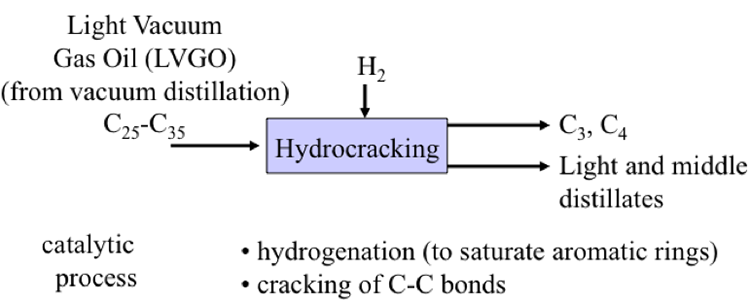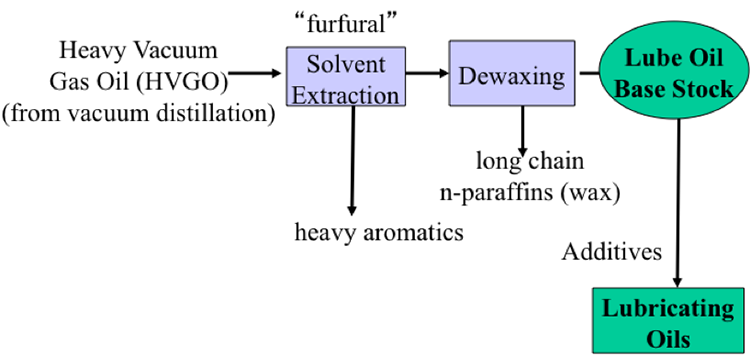Conversion and Processing of Vacuum Gas Oils
Moving to the vacuum distillation column, the vacuum distillates, light vacuum gas oil (LVGO) and heavy vacuum gas oil (HVGO) can be processed by some advanced FCC processes. However, hydrocracking is more frequently used to convert LVGO and HVGO into light and middle distillates, using particular catalysts and hydrogen. Similar to LCO, the LVGO and HVGO fractions from vacuum distillation tend to be highly aromatic. Catalytic hydrocracking combines hydrogenation and cracking to handle feedstocks that are heavier than those that can be processed by FCC, because of excessive coke deposition on the catalyst in the absence of hydrogen. Middle distillates (e.g., kerosene and diesel fuel) are the principal products of hydrocracking. In addition to light and middle distillates, hydrocracking also produces light distillates and LPG, as shown in Figure 3.7.
HVGO can also be used as a feedstock to produce lubricating oil base stock, through a sequence of solvent extraction processes to remove aromatic hydrocarbons by furfural extraction, and to remove long-chain paraffins by dewaxing (Figure 3.8).

Schematic of Hydrocracking Light Vacuum Gas Oil (25-35 Carbon Chains).
The carbon molecules undergo hydrocracking in the presence of hydrogen gas. The products come out as C3 and C4 molecules, along with light and medium distillates. The schematic also notes that the catalytic process includes hydrogenation (to saturate aromatic rings) and the cracking of C-C bonds.

Schematic of Hydrocracking Heavy Vacuum Gas Oil (25-35 Carbon Chains).
The Heavy vacuum gas oil goes into solvent extraction with furfural which extracts the heavy aromatics. Then the products go into dewaxing which separates out long-chain b-paraffins (wax). That yields lube oil base stock, which becomes lubrication oils.